Though drinking etiquette has changed over the years, it has an important place in Japanese culture. When you go into a bar with Japanese friends, you are supposed to know basic drinking etiquette, such as knowing how to say cheers in Japanese. If you have no clue about all these, don’t worry we’ve got you!
In this post, we are going to talk about drinking etiquette, saying cheers in Japanese, and some popular Japanese drinks. Alright, since you want to learn Japanese, let’s get started!
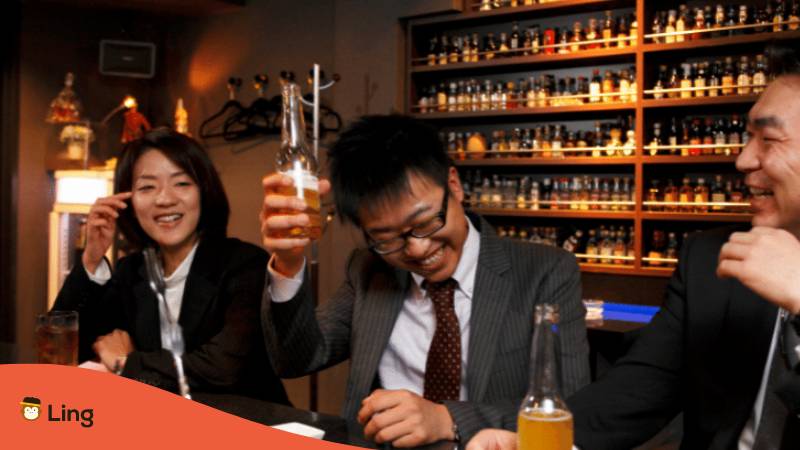
How To Say Cheers In Japanese Like A Native?
There are different ways of saying cheers in Japanese, but the most widely used phrase is 乾杯! (kanpai). It has a very similar meaning to “bottoms up” in English.
Another cheers phrase is お疲れ様です! (otsukare-sama desu) which is a perfect thing to say if you go out to drink alcohol with your colleagues or to celebrate a promotion at work. It means something like “good job today or thanks for your hard work”. It sounds more sophisticated than kanpai.
If you want to sound natural you can say お疲れ様でした (otsukaresama deshita) which means something like “you are tired so you deserve a drink“. Of course, it is not a literal translation but Japanese people say this phrase to show empathy and respect for someone’s effort and hard work and then award them with a drink.
The less common alternative that you can use for toasts is おめでとう! (omedetou). It means “congratulations” in Japanese. A very classic yet useful phrase to celebrate something.
The most interesting way of saying cheers in Japanese may be バンザイ! (banzai). It means “live 10,000 years”. Told you it was interesting! The term was derived from the Japanese battle cry 天皇陛下万歳! (Tennōheika Banzai)[Speechword voice=”Japanese Female” isinline]天皇陛下万歳[/Speechword] which means “Long live his Majesty the Emperor” and it was eventually shortened to banzai.
Check this list of other words you can say to your loved ones when drinking together.
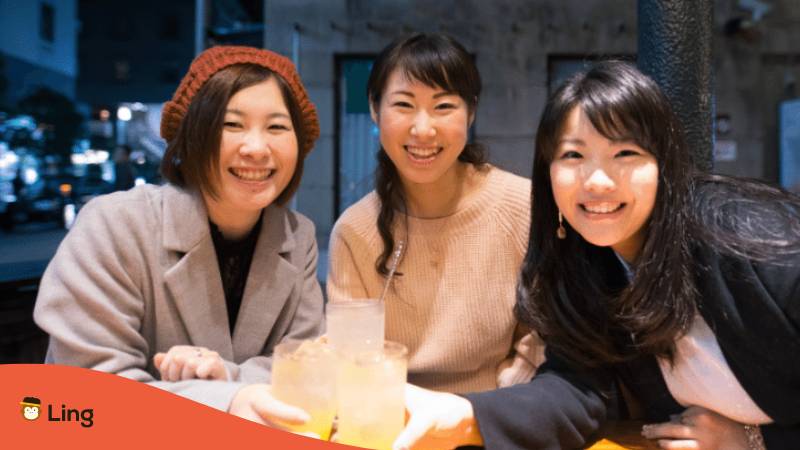
Drinking Etiquette In Japan
Most Japanese people will accompany their traditional meals with a drink. The first rule to abide by in Japan is to order the same drink (usually sake or beer is preferred) with others as your first drink. It is a sign of politeness. After that, you can order whatever you like.
Once the drinks are ready, don’t take a drink alone. Always wait for others to receive their drinks before grabbing your glass. Then wait for someone to offer a “kanpai” before the drinks flow.
Don’t forget that when touching glasses for a toast, the glass of the senior person should be slightly higher than the younger ones in the group. Also, try to make eye contact with others during toast otherwise, it could be considered rude.
It is a custom not to fill your own glass if you are in a bar with other people. So, when the refill is needed, do not pour sake into your own glass. Watch out for the glasses of people who are older than you, and fill their glasses. And the younger ones will do the same for you. Don’t forget to hold your glass with both hands while someone is pouring sake into your glass. This behavior is believed to strengthen the bond between friends or colleagues.
When you’ve had enough drink, simply stop and leave your glass full so that no one offers to fill it.
7 Popular Japanese Drinks
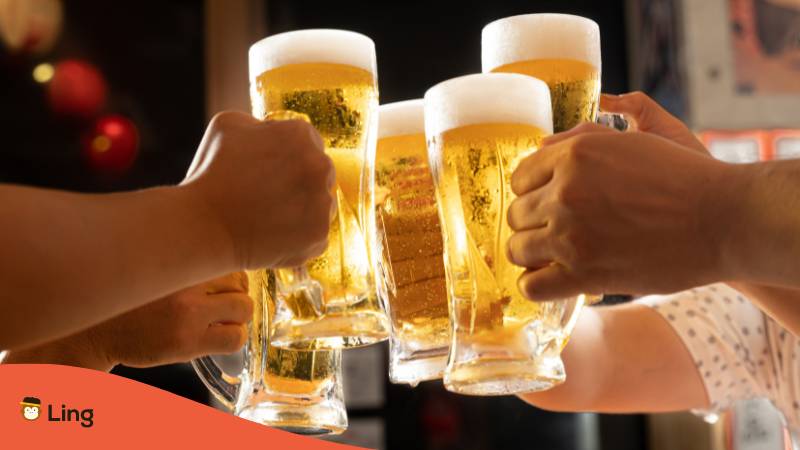
1. ビール – Bīru
No surprise that ビール (beer) is the most popular drink in Japan. If you need a go-to drink in Japan, beer is recommended as a starter. It is made from cereal grains, yeast hops, and water same as everywhere in the world.
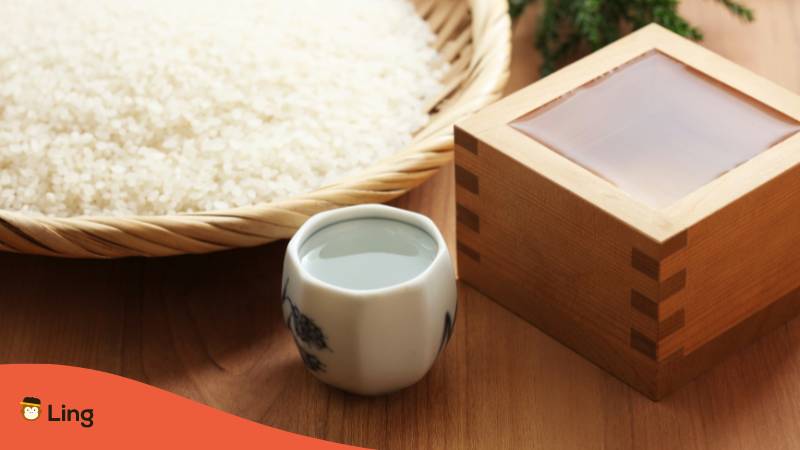
2. 酒 – Sake
酒 (sake) is also known as the Japanese rice wine is an alcoholic drink made of fermented rice. It has a kind of sour flavor. Sake is traditionally drunk from a small sake cup called お猪口 (ochoko) and poured from a ceramic flask called とっくり (tokkuri).
Sake is a must-try in Japanese drinking sessions, and many tourists drink sake during their trip to Japan!
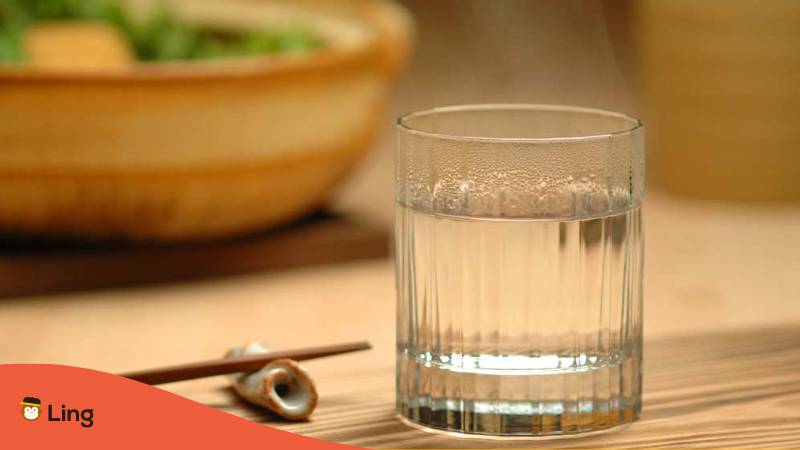
3. むぎ焼酎 – Mugi shouchuu
むぎ焼酎 (Mugi shouchuu) has a mild flavor and it is a good choice to start drinking. Shouchuu, first made in the 1500s in Kyuushuu, is a distilled Japanese alcohol that is created with a fermented mash of water, yeast, and kouji mold. Then, the crushed base ingredient is added to the mash and left to ferment. Mostly the base ingredient is barley. In the end, the mixture is distilled.
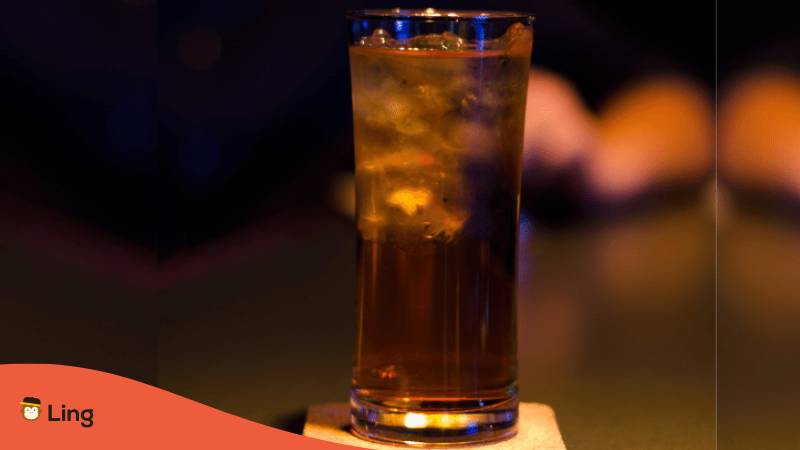
4. ウーロン茶 – ōlong cha
ウーロン茶 (ōlong cha) has a noticeably strong tea flavor that can overpower the taste of mild shouchuu. ōlong tea is added into a mild shochu variety like mugi into the mix.
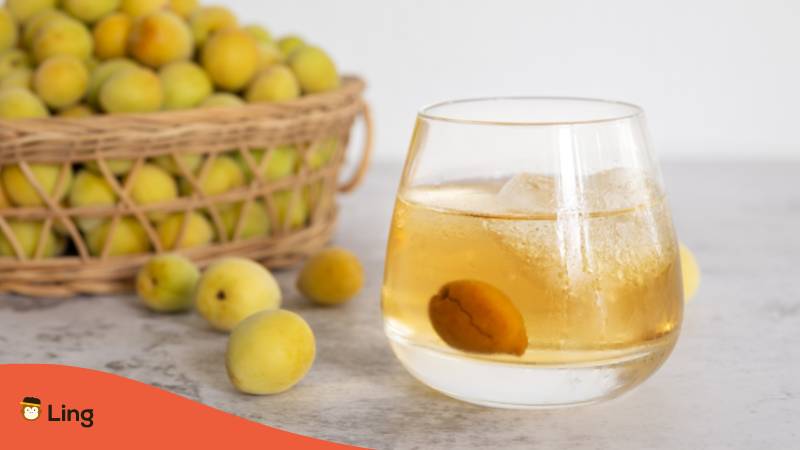
5. 梅酒 – Umeshu
梅酒 (Umeshu) is a kind of plum wine using a specific kind of ume tart plum mixed with alcohol like sake, and plus a sweetener like sugar. It is a unique Japanese drink that you must try.
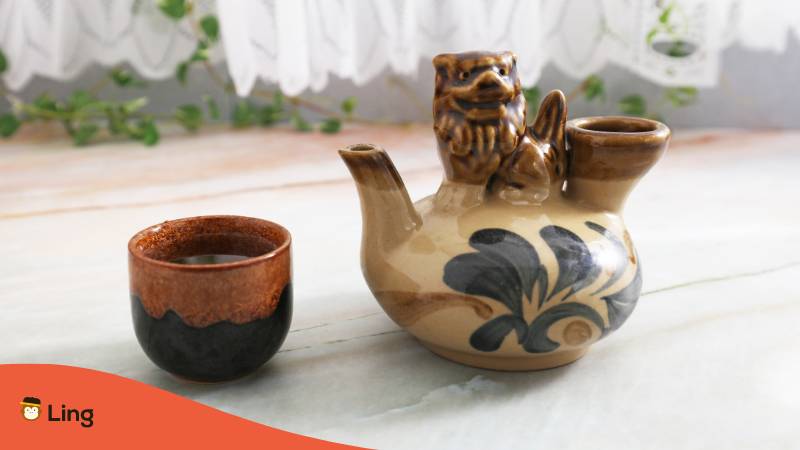
6. 泡盛 – Awamori
泡盛 (awamori) is a distilled type of Japanese alcohol native to Okinawa. It is usually consumed with water or ice cubes. Awamori has a stronger yet smoother flavor compared to sake.
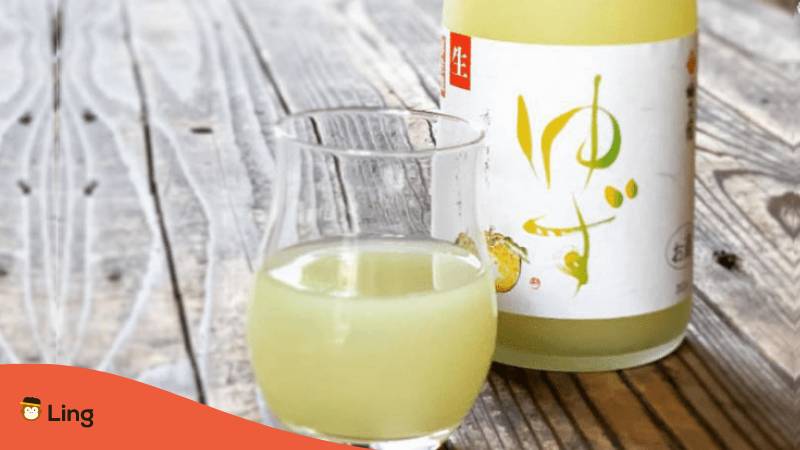
7. ゆず酒 – Yuzushu
ゆず酒 (yuzushu) has almost the same ingredients as umeshu, except that yuzu includes a citrus fruit like lemon instead of sour plum. It tastes like a tangy lemonade with alcohol. It is such a refreshing drink in summer hot.
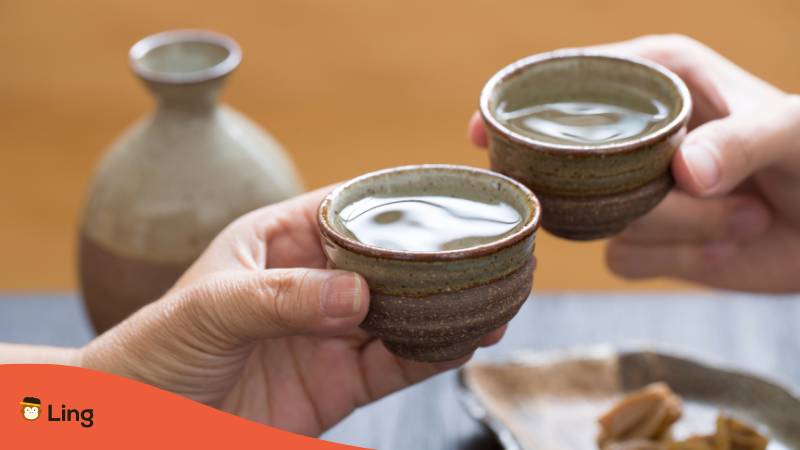
History Of Toasts In Japanese Culture
In Japanese drinking culture, toasting originated from religious ceremonies where Japanese people used to toast to God. So the reasons for toasting were a little different in Japanese history when compared to today.
Exorcise Evil Spirits
In the Middle Ages, Japanese people believed that there were evil spirits in alcohol, and you would be possessed by them if you drank your alcohol without cleansing it. People started to clink glasses together and believed that the sound it produced helped them to shoo the evil spirits away.
Test Drinks For Poison
Murders by poisoning were pretty common at drinking parties in ancient times. The purpose of clinking glasses together hard enough is to spill your drink into that of your enemy. So, if they took a sip, as usual, it meant that it was safe to drink your own drink as well.
The Origin Of Kanpai
The English and the Japanese made a friendship treaty in 1854. When the British Earl of Elgin visited Japan to finalize the treaty, he met with Japanese diplomat Kiyonao Inoue.
It is said that the Earl of Elgin insisted that Kiyonao Inoue make a toast during the party because it was already a custom for British people at that time. Without any hesitation, Kiyonao stood up and shouted “Kanpai!” loudly. It was an instant hit, and they loved it!
Since that time, Japanese people say the word “kanpai” with a big enthusiasm while toasting.
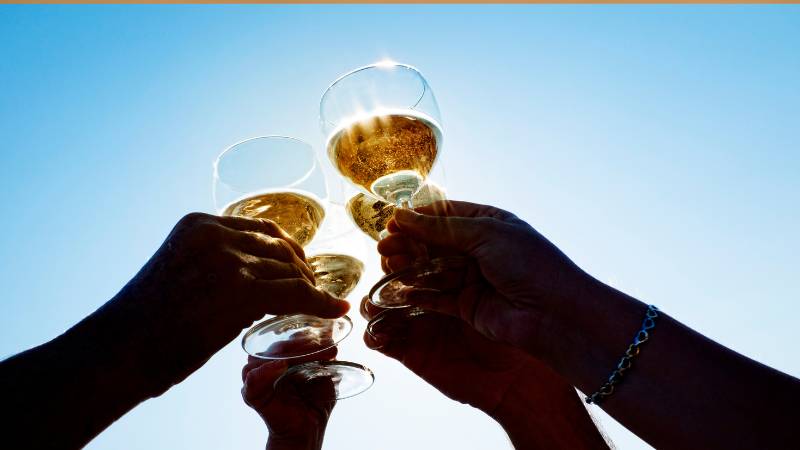
Bonus Tip: Do Not Toast With Water!
We know that it is not uncommon to toast with water in the West. However, you must avoid it in Japan, even if you are not drinking alcohol.
The reason behind this is that the Japanese people give offerings of water to the dead so that they won’t get thirsty in heaven. Toasting with water means saying goodbye to people that have passed away, it is a farewell.
If you don’t want to drink alcohol, you can order soft drinks or non-alcoholic drinks instead of water. Because toasting with water could be considered as wishing bad luck, or even death, on somebody.
Wrapping Up
After reading this post, you may feel curious about Japanese culture or even the languages spoken in Japan. This is the reason why we are here! You can learn more about Japanese culture by visiting our Japanese blog on Ling Learn Languages. If you want to learn the Japanese language I highly recommend you to try out the Ling App! For more information read below!
Want To Learn Japanese?
Do you want to learn Japanese, but you are unsure where to start? Well, the Ling App is an incredible platform that you must check out today!
The Ling app is a language learning app that includes the Japanese language as well as 60+ other languages. This app is not overwhelming to use, and you won’t need to commit many hours just to learn something new every day. In fact, the Ling App is designed to save you time while learning languages, hence it has practical and concise lessons guaranteed to help you learn the Japanese language in 15 minutes per day!
And the best part is you can try it out for free! Get it from the App Store or Google Play Store now!


























